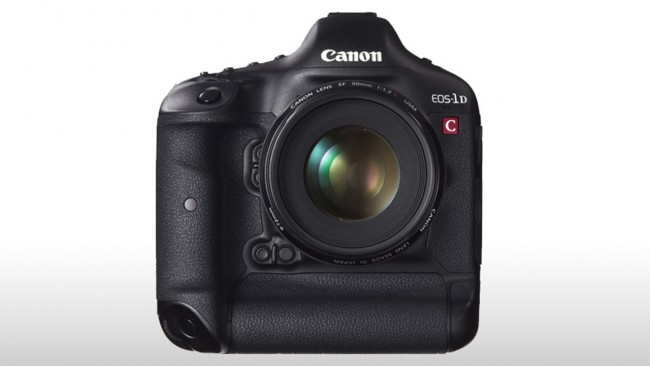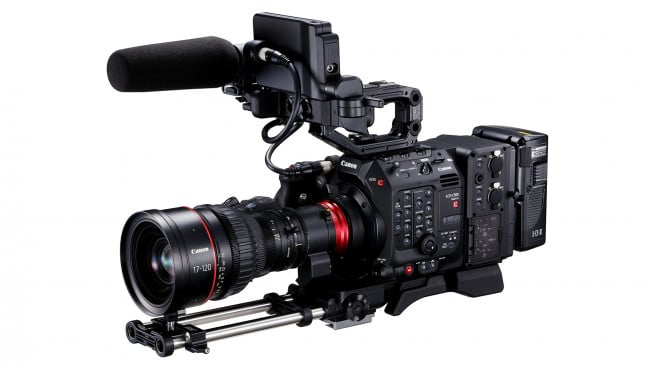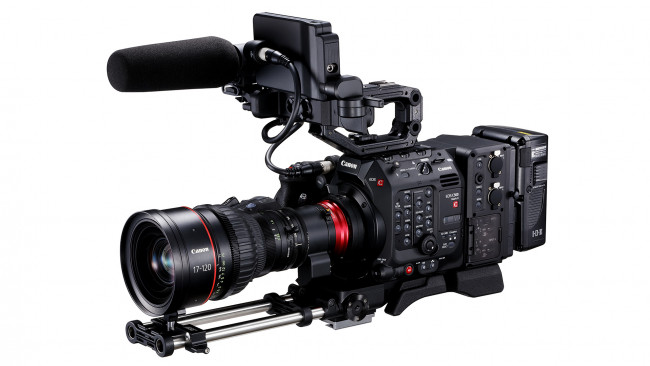
Canon 1D C
RedShark Editor in Chief, David Shapton, sits down with Yuichi Ishizuka, President and CEO of Canon Europe, Ltd and Managing Executive Officer - Canon Inc.
When you think about it, we have a strange relationship with a lot of companies. We know their names so well that they could almost be part of our families. We know their products because we have probably grown up with them and seen them grow through multiple generations. We may even have met staff from the company at trade shows, and met other end users, especially if we’re professionals.
But how well do we really know the company itself? My guess is
not very well.
But all of that changed for me in the space of half an hour, when I sat down to interview Mr Yuichi Ishizuka, President and CEO of Canon Europe, Ltd and Managing Executive Officer - Canon Inc.
Mr Ishizuka is a cultured and thoughtful person. He’s also steeped in the history of his company. That’s important, because a recurring theme is that Canon’s heritage - which stretches back over seven decades - is an essential part of the modern company. When you have that sort of history, it’s going to be much, much harder to make products that aren’t good.
Of course, in 30 minutes, we were only able to scratch the surface. We are going to follow up this interview with a much more in-depth one as soon as we can. But here’s what I learned, just to give you a flavour - in the order that follows, simply because the course taken by our conversation.
R system
While this is a very new lens mount system, the planning behind it went back a long way: hardly surprising when you consider that its predecessor lasted over thirty years. The new system needed more bandwidth - physically manifested as more pins on the mount.
The R system is NOT just for mirrorless cameras. It is relevant to all of Canon’s camera types - including video
Speed to market
Canon has three fundamental technologies that are world-leading: Optics (lenses), sensors and processors. Because it
makes these, it has full control over them. So it’s not surprising that Canon wants them all to work together to their full potential. That’s not easy. They’re working at such a high level of performance that any discrepancy could seriously affect the performance of all three elements in this technology stack.
So Canon prefers to wait until everything is just right before launching a product. There’s obviously much more to it than this but this is the essence of it.
Mirrorless vs SLR
Even though mirrorless can create incredible images, there are still some areas where DSLRs are better. Currently Autofocus is better with DSLRs, and some photographers prefer to have zero latency in a viewfinder - although viewfinders are improving. So it might be between three to five years until mirrorless cameras are better in every way than DSLRs.
Co-operation
Canon is very open to working with other manufacturers where to do so might speed up the availability of a product. Working with Atomos is an example.
R&D
An astonishing 8% of Canon’s revenue (note: revenue, not profit) is spent on R&D. It’s a never-ending quest. Some of this research goes back a long time. Canon was the first company to put a CMOS sensor in a camera. The first product was in 2003, but CMOS had been in R&D since 1985!
If you thought this was interesting - watch out for more in RedShark soon.

 Canon 1D C
Canon 1D C


Comments